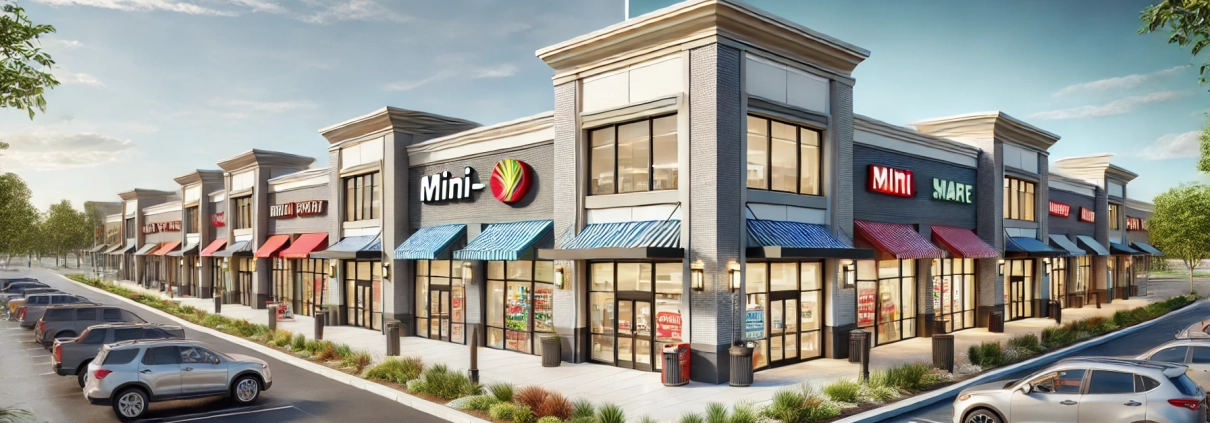Convenience or Strip Center
This retail subtype is characterized by having a row of stores, with on-site parking often found in the front of the stores. Open canopies may be used to connect store fronts of the tenants at the center. Average size may be 10,000 – 15,000 SF and larger, with a trade area of less than 1 mile. A typical anchor for these types of centers may be convenience stores, such as a mini mart.
Source: ICSC
Putting ‘Convenience or Strip Center’ in Context
Scenario Overview:
The Jefferson Family Estate has owned the Mandarin Grove Shopping Center, a 12,000 SF convenience or strip center located in the Mandarin neighborhood of Jacksonville, FL, for over two decades. The center, which serves the surrounding residential community, includes six tenants with a mini-mart as the anchor tenant. The center’s trade area is less than a mile, drawing customers primarily from the immediate neighborhood. On-site parking is located in front of the stores, making it convenient for shoppers to access each retail space.
Background:
For years, the shopping center has provided steady, albeit modest, cash flow for the estate. The property has been in a “set it and forget it” mode, with minimal active management or investment. The Jefferson Family Estate, composed of multiple generations, has historically taken a conservative approach, preferring stability over aggressive growth. However, recent leadership changes have led to a shift in strategy. The younger generation of the family, now in control of the estate, sees an opportunity to increase the value of the center through a value-add strategy.
Value-Add Strategy:
The family’s goal is to enhance the property’s net operating income (NOI) by improving the tenant mix, optimizing lease structures, and making strategic capital improvements. These steps are designed to increase the property’s appeal to both tenants and shoppers, thereby boosting rental income and the overall value of the asset.
- Tenant Mix Optimization: The Jefferson Family Estate identifies a couple of underperforming tenants with leases expiring within the next 18 months. They plan to replace these tenants with businesses that have a stronger draw in the local market, such as a popular local coffee shop and a boutique fitness center. These tenants are expected to pay higher rents and attract more foot traffic to the center.
- Lease Restructuring: The family also reviews existing leases, finding opportunities to restructure them to more favorable terms. This could include negotiating longer lease terms with annual rent escalations or shifting some tenants to triple net (NNN) leases, which would pass more of the property’s operating expenses onto the tenants.
- Capital Improvements: The center’s façade is somewhat dated, and the parking lot has seen better days. The estate allocates a budget for minor renovations, including a fresh coat of paint, updated signage, improved landscaping, and resurfacing of the parking lot. These enhancements are intended to increase curb appeal and justify higher rents.
Outcome:
After implementing these strategies, the Jefferson Family Estate sees a significant increase in NOI, which boosts the property’s value. The improvements not only make Mandarin Grove Shopping Center more attractive to potential buyers but also provide the family with a stronger cash flow while they hold the property. Should the family decide to sell, the center’s enhanced performance and improved tenant mix could command a premium price in the market.
Conclusion:
This hypothetical scenario illustrates how a convenience or strip center, such as Mandarin Grove Shopping Center, can serve as a stable, long-term investment for an estate like the Jefferson Family’s. By employing a value-add strategy, even a relatively low-risk asset like a convenience center can see substantial growth in value, benefiting the owners whether they choose to continue holding the property or prepare it for sale.
Click here to get this CRE Glossary in an eBook (PDF) format.

